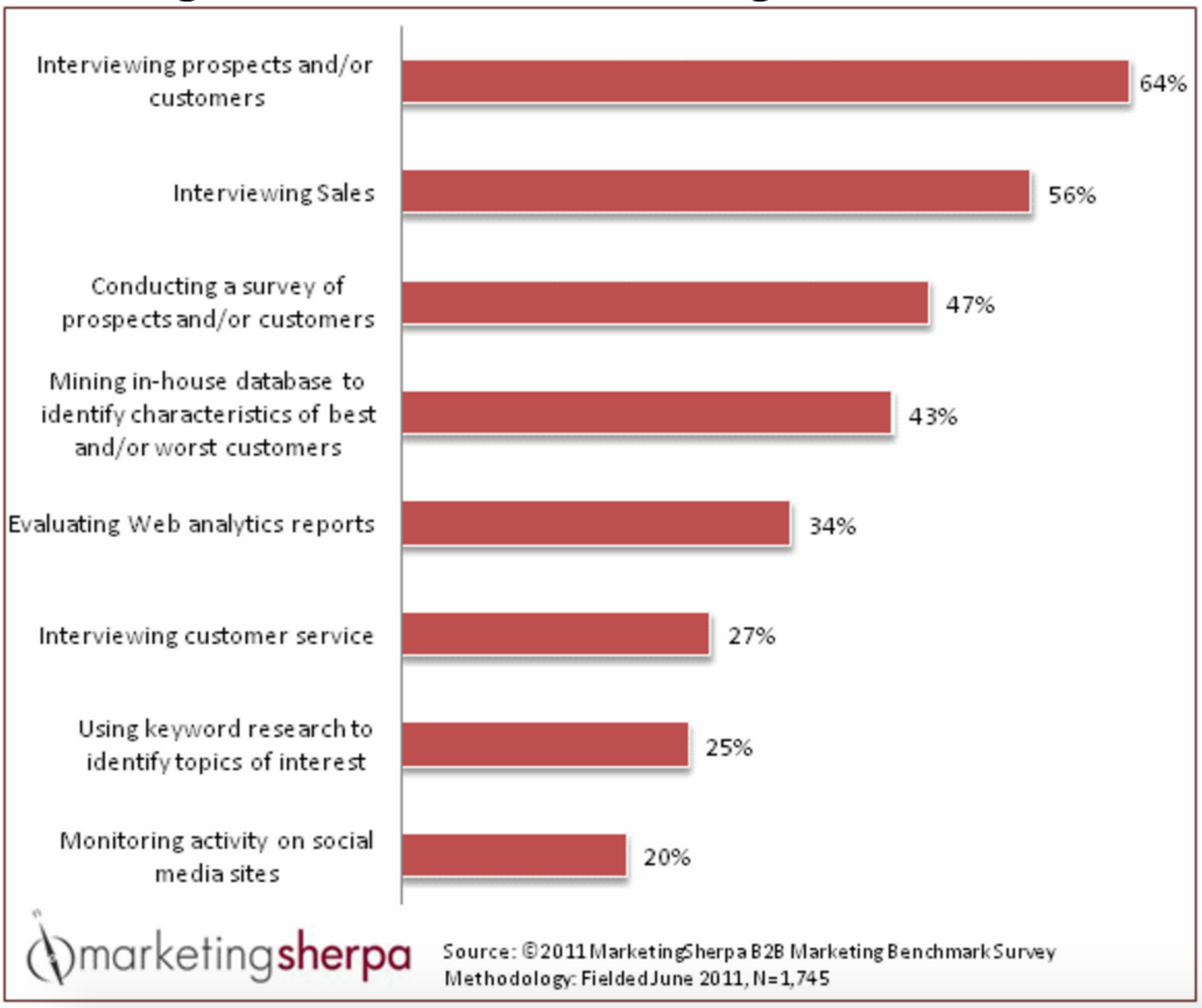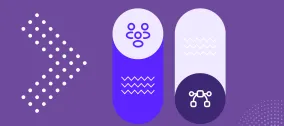Do You Know Who Your Customers Are?
Previously in our blog, we discussed the five basics of content marketing. The first of these five basics of content marketing is understanding your audience. You can create all of the killer content you can, but if you don’t know who your audience is, what problems your business can solve for them, and where and how they’re consuming your content, then you risk it missing the mark entirely and falling into the internet’s ether. Before you create any content, it’s important to understand who will be consuming it and why. You need to know your audience. Building a profile of your typical customer, both prospective and active, will help you to focus your content and better target your specific audience. These profiles are called personas.  Research conducted by MarketingSherpa found that only about 41% of B2B organizations have established buyer personas and that they “could benefit from learning best practices to either create or adjust existing personae as their market so that they can gain greater relevance for their communications strategies.” To discover what these best practices are, they surveyed over 1,700 B2B marketers to find out which tactics were the most useful in constructing their business’ personas:
Research conducted by MarketingSherpa found that only about 41% of B2B organizations have established buyer personas and that they “could benefit from learning best practices to either create or adjust existing personae as their market so that they can gain greater relevance for their communications strategies.” To discover what these best practices are, they surveyed over 1,700 B2B marketers to find out which tactics were the most useful in constructing their business’ personas:  And once you know who your audience is, you can better identify what problems they may be looking to your business to solve.
And once you know who your audience is, you can better identify what problems they may be looking to your business to solve.
Ok, but What is a Persona?
A buyer persona is “a composite sketch of a key segment of your market.” For content marketers, this is important to help inform the types of content that should be created and where in the buying cycle it should be presented to provide the most value to the audience. Without personas, this process is little more than guesswork and intuition; however, by constructing personas based on empirical research, content marketers can take an evidence-based approach to content creation. So how do we build our personas?
Not Just Who, but What and Why
First, start to picture your ideal customer.
- Who are they?
- What is their job title
- What industry do they work in
- What might their typical day look like?
These are the basic questions to ask to start to build the foundation. Next, if you have any performance metrics on your current audience available, pull them to help you paint a picture of what content they consume and how they consume it.
- What device and platform did they access your website with?
- What time of the day are they most likely to visit your website?
- How much of the content on your website did they consume during their visit?
- What journey did they take to visit and navigate through your website?
Then, consider what those answers might tell you about what their role is in their business’ purchasing process.
- Are they doing preliminary research and presenting options to their management or do they make purchasing decisions themselves?
- What challenges do they face most often and how might your product or service overcome them?
- How far along are they in their decision-making process?
Finally, consider who or what else might influence their purchasing decision.
- Who do they trust to deliver the content they consume the most often?
- Are they more likely to place greater value on word-of-mouth from people they know personally or industry thought leaders?
- Are there other events that might trigger or otherwise influence their purchasing decision?
How you answer these questions will help you to understand who your audience is, what content you can create to appeal to them specifically, and how you can best deliver it to intervene in their buying cycle as early as possible.
Know Your Audience
Now that you know how to build a persona, where can you source the information you need to do it? The Content Marketing Institute suggests the following seven ways to research your audience:
- A/B testing: Testing your current content by delivering different content to different segments of your audience can provide quantitative performance data.
- Progressive profiling: By using smart lead forms and directed questioning, you can collect audience insights that grow more detailed over time.
- Current content consumption patterns analysis: Basic website performance metrics such as page views, time on site, downloads, open rates, and click-through rates can provide insight on what resonates most with your audience.
- Sentiment analysis application: Social listening tools are getting better at assessing consumers’ emotional states to contextualize social chatter in a way that’s relevant to your business.
- Conversations with your sales team and/or mining your CRM system: These team members are on the front lines of customer interactions, so chances are they have plenty of insights they can share.
- One-on-one interviews: Nothing beats the ability to get information directly from your customers and prospects.
Conclusion
Remember that like the content you create, your personas should be revisited and refined as new information becomes available. Like your content marketing plan, understanding your audience is an ongoing process that benefits from being continuously refined. With each new piece of content, you publish, new metrics become available to you that help tell your audience’s story.







